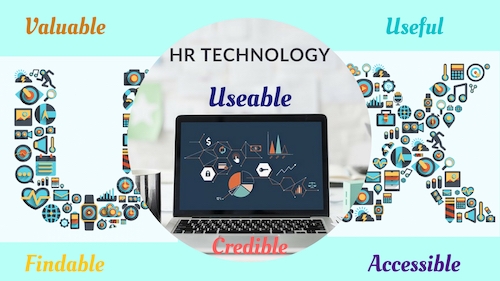User experience is the key to how much employees are able to benefit from a digital system or an HR technology solution.
Experience is what determines whether someone continues using something or not. Marketers, entrepreneurs, business strategists, designers and professionals, across domains, keep end-user experience at the core, while striving to be the best. In technology too, user experience is what brings about rapid developments and advancements; and also ensures faster and easier adoption.
While the strength of a digital system or an HR technology solution depends on various factors, user experience holds the key to how much employees, across levels and functions, are able to benefit from it. Furthermore, service-delivery applications— such as employee self-service (ESS) and manager self-service (MSS), HR help-desk solutions, HR/employee portals, and/or employee/manager portals—play an important role in enabling seamless user experience.
Organisations in the current times have multigenerational workforces and hence, keeping in mind employee expectations and limitations, it is important for them to invest in technologies that ensure convenience and ease of access and use. This means that mobile interface for HR systems deployed within an organisation will play a critical role in determining the rate of adoption and use.
There has been a significant growth in the kind of investments organisations are making in mobile-enabled HR solutions, and in the adoption of collaboration tools, such as messengers and HR helpdesks on chat-bots. These service-delivery technologies are quite promising and have been able to provide personalised HR experience to the users, resulting in increased adoption across levels.
For instance, Aditya Birla Capital, the financial services arm of the Aditya Birla Group, partnered with PeopleStrong Alt to digitise employee work–life management and employee interactions with HR. The partnership spanned twelve different business entities of the group and 14000+ employees across India. The idea was to create an integrated workforce-management framework, which can provide a unified view to all its users and create business impact by avoiding revenue leakages, which occur due to disconnected systems.
Learn how Conversational Interfaces are enabling enterprises in creating exceptional Employee Experiences!
Consequently, business productivity improved and the digital HR transformation powered by SaaS and the mobile, resulted in enhanced employee experience. While employee satisfaction grew to 88 per cent in the first 30 days, the experience improved to over 94 per cent with time, as PeopleStrong grasped the organisation and its processes in detail. In all this, it was the mobile app which was exceptionally well received and created a remarkable impact.
With the complete attendance system being automated, the sales staff was able to mark their attendance through the mobile app, which captured the real data via a geo-tracking system. 60 per cent of the employees downloaded and began using the Alt Worklife mobile app within a week of its launch. This not only helped simplify their work life but also provided support in terms of ‘HR on the move’ for employees.
Furthermore, the Manager Self Service portal helped put the onus of processes, such as confirmation and transfer, on the managers as owners, while various auto reminders and auto triggers ensured timely completion of the activities.
In addition, the strategic bandwidth of Aditya Birla Capital’s HR team was released, ensuring minimal involvement in transactions. Other benefits included, a) enhanced cross-group learning and sharing of good practices through a common information base; b) more efficient resourcing through economies of scale in staffing and facilities; c) greater efficiency and professional provision of HR services through streamlining and simplifying services; and d) improved career development of the teams.
Moreover, data-driven decision making also became a reality with timely reports and dashboards being available to the teams to enable them to make smart and informed decisions. This is a great example of how digital HR transformation can create value for all stakeholders as well as for industry.
Organisations which keep user experience at the centre, while looking at a digital transformation journey, are sure to achieve a high level of service-delivery excellence. This also helps increase the number of people each HR administrative role can support across an organisation. That is why, end-user experience may be the last mile, but needs to be kept in mind right from the start, while looking at digitising HR. After all, it is the seed required to reap great benefits from digital HR efforts.



